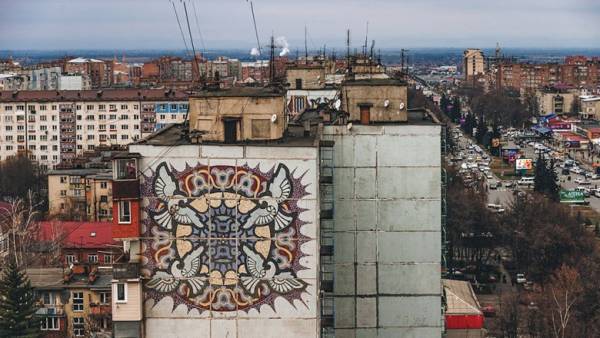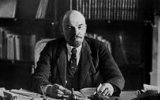Soviet mosaic in the Caucasus. Photo gallery
As decorative panels with national motifs and Lenin turned the residential area of Vladikavkaz in the mini-Tashkent.
Upstairs
Soviet mosaic, perhaps, is the architectural calling card of the Soviet Union of the 1960s and 1980s. Decorative panels of small colored pieces of tile decorated not only the building of houses of culture and other institutions, but ordinary houses and even a bus stop.
Monumental mosaics are preserved in many cities of the former Soviet Union.
No exception — Vladikavkaz, where panels, which are intricately interwoven national motives and characters “socialism”, still adorn the high-rise building in residential area of the city.
To establish paternity, and to trace their history is difficult. However, at least part belongs to Alexander Gorkomu is the youngest of three brothers-the artists who made the Tashkent unlike any other city in the world.
 Anna Кабисова1/2
Anna Кабисова1/2
Street Kotsoeva, 77. The house is 1963 built
 Anna Кабисова2/2
Anna Кабисова2/2
Street Kotsoeva, 77. The house is 1963 built
— In the early 70’s I was heavily involved in public design and remember that in those years the Republican house-building factory was not doing a very traditional activity: they began to make mosaics — says Professor of the Department “Architecture” of the North-Caucasian mining and metallurgical Institute, honored worker of culture of Russia Exiled Tsallagov. — In North Ossetia from Uzbekistan arrived artist Alexander Zharskiy is one of three brothers who made in Tashkent mosaics for the decoration of high-rise buildings.
News “Remember the mountain again”: as dying and resurrected leader of the world proletariat
“Remember the mountain again”: as dying and resurrected leader of the world proletariat
Fellow artists Nicholas, Peter and Alexander Garskie born in a family of Russian immigrants in France. After the Second world war, the father Jarsky with family returned home, where all three sons received his art education and became one of the prominent representatives of Soviet modernism.
They are known for his work in Uzbekistan. Garskie came to Tashkent to help rebuild it after the devastating earthquake of 1966. Their designs in the city has created many decorative reliefs and mosaics adorning the buildings — a panel of nine. Thanks to the hundreds of non-repetitive work, the city has acquired a very special person.